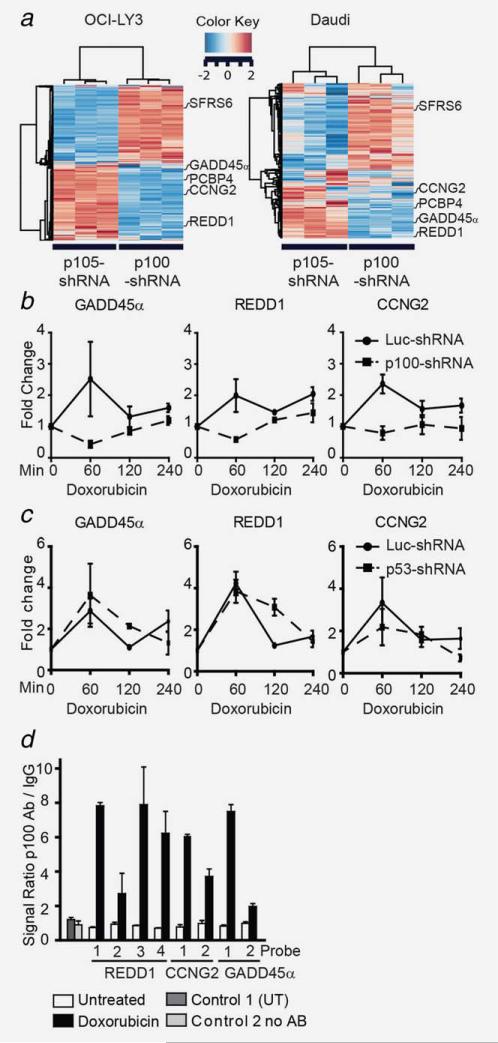Figure 5.
The noncanonical NF-κB pathways directly regulate GADD45α, REDD1 and CCNG2. Daudi and OCI-LY3 cells expressing p100-, p105- and luciferase-shRNA (Luc-shRNA) were grown in triplicate and RNA was extracted as described in the Materials and Methods section. (a) Heatmap illustrating the expression level of the top 300 genes distinguishing p100 from p105-regulated genes. (b) Changes in gene expression after doxorubicin treatment were measured by QPCR. Three independent experiments were used to extract RNA from OCI-LY3 cells expressing p100- (dashed line) or Luc-shRNA (solid line) following a doxorubicin time course (2 μg/mL). (c) Changes in GADD45α, REDD1 and CCNG2 mRNA levels in luciferase (Luc)- or p53-shRNA expressing OCI-LY3 cells after 1 h of doxorubicin treatment. Each error bar is representative of the standard deviation of three independent experiments. (d) QCHIP assay of p100 targets. OCI-LY3 cells (50 × 106) were untreated or treated with doxorubicin for 60 min prior to fixation. Cells were prepared as described in the Materials and Methods section. Genomic QPCR was carried out in triplicate after DNA regions (numbered from 1–4) were immunoprecipitated (IP) with IgG or p100/p52 antibodies. Results are presented as a mean value with corresponding standard deviations. P100Ab = p100 antibody. All comparisons in this graph have p < 0.001. Control 1 = untranscribed region (UT), Control 2 = no antibody and Luc = Luciferase.

